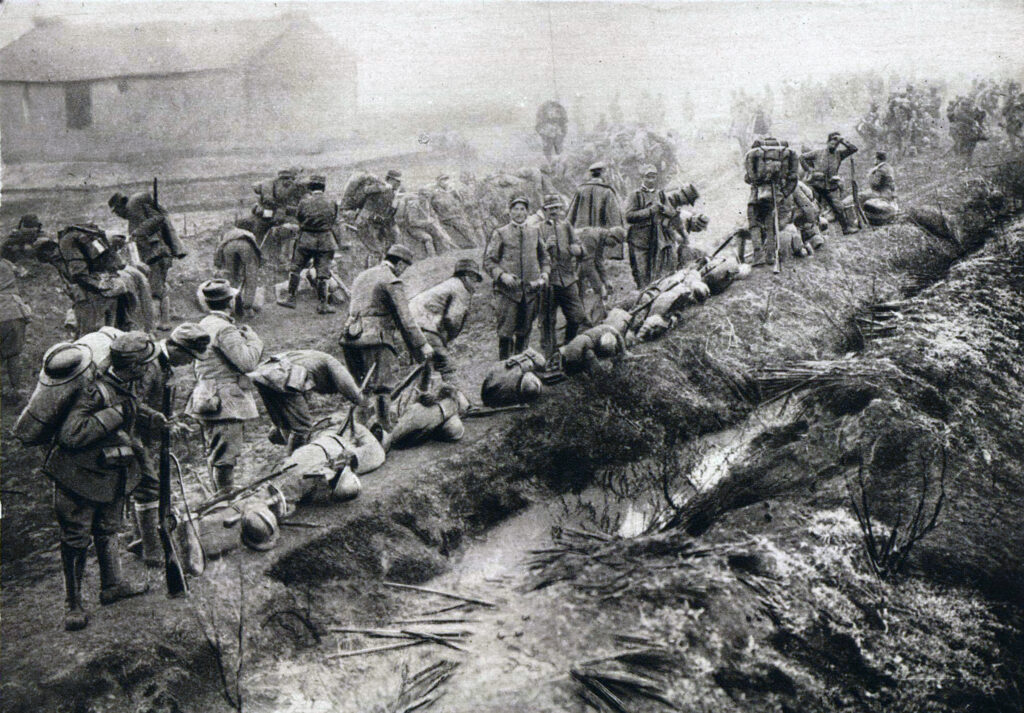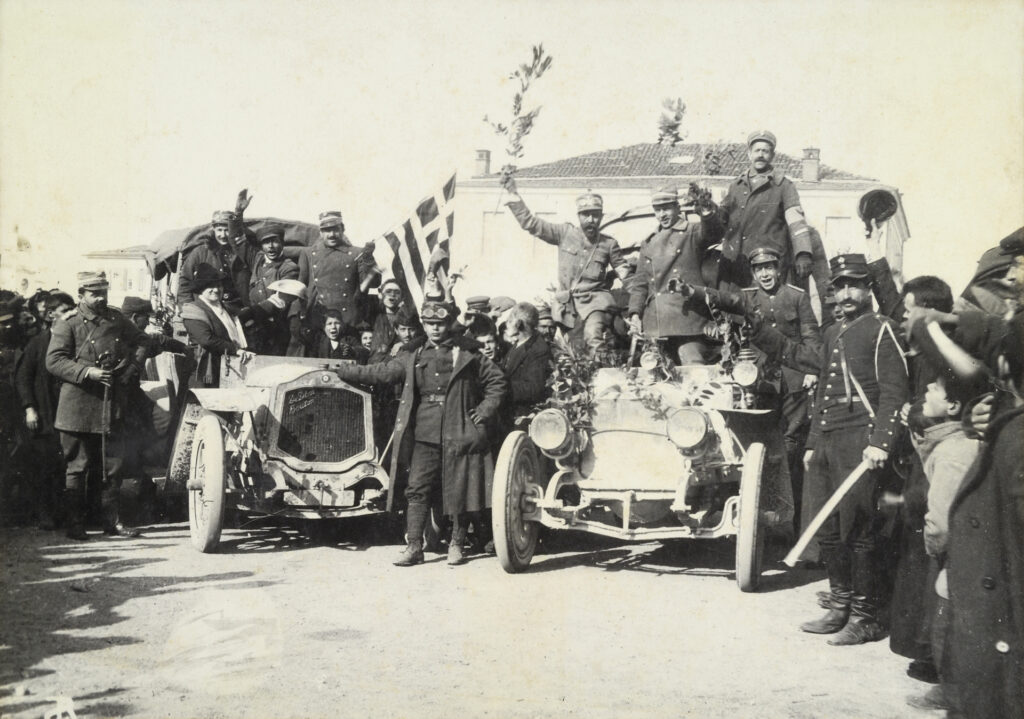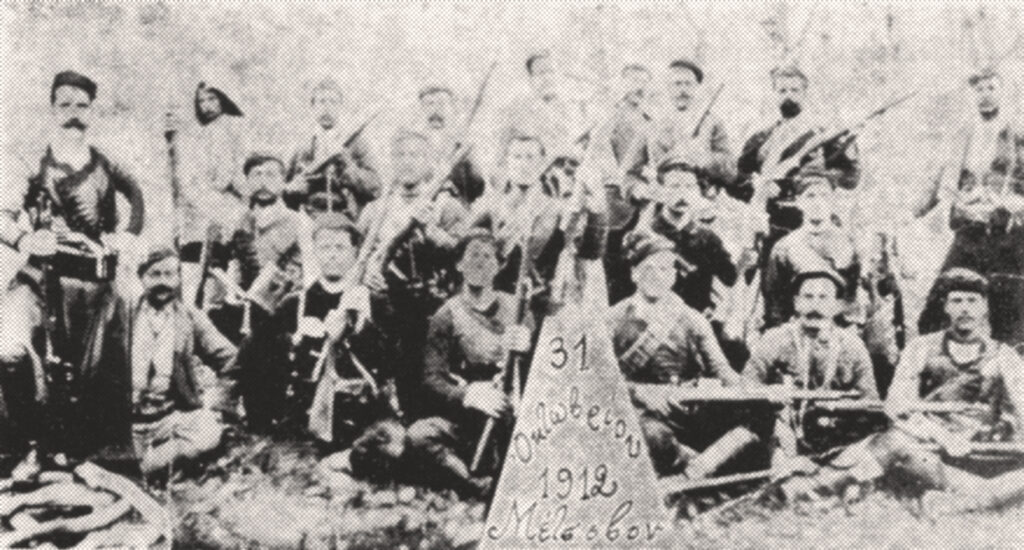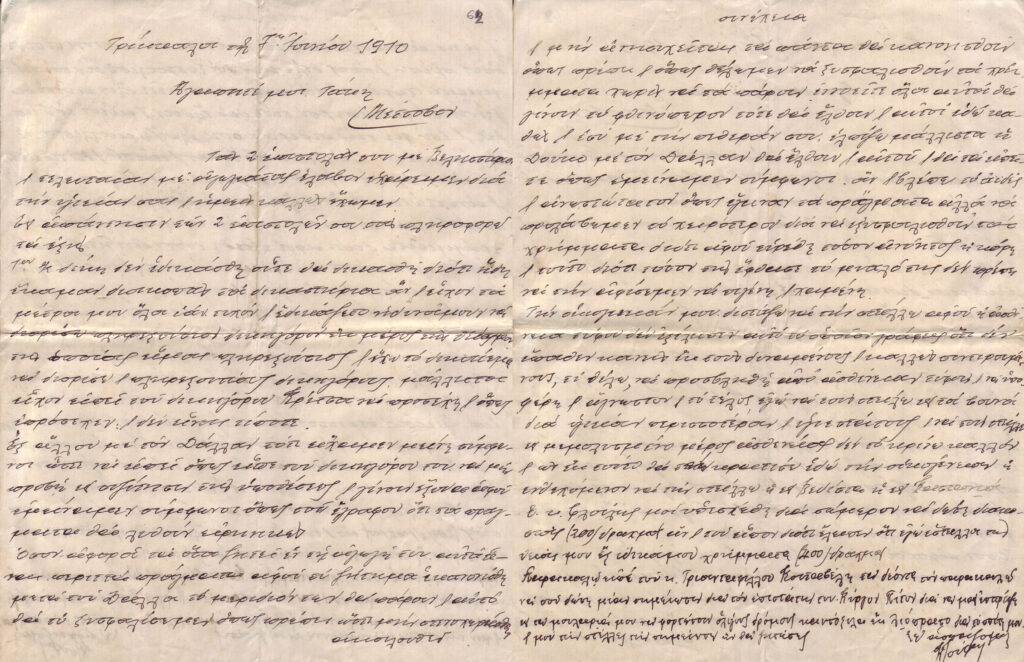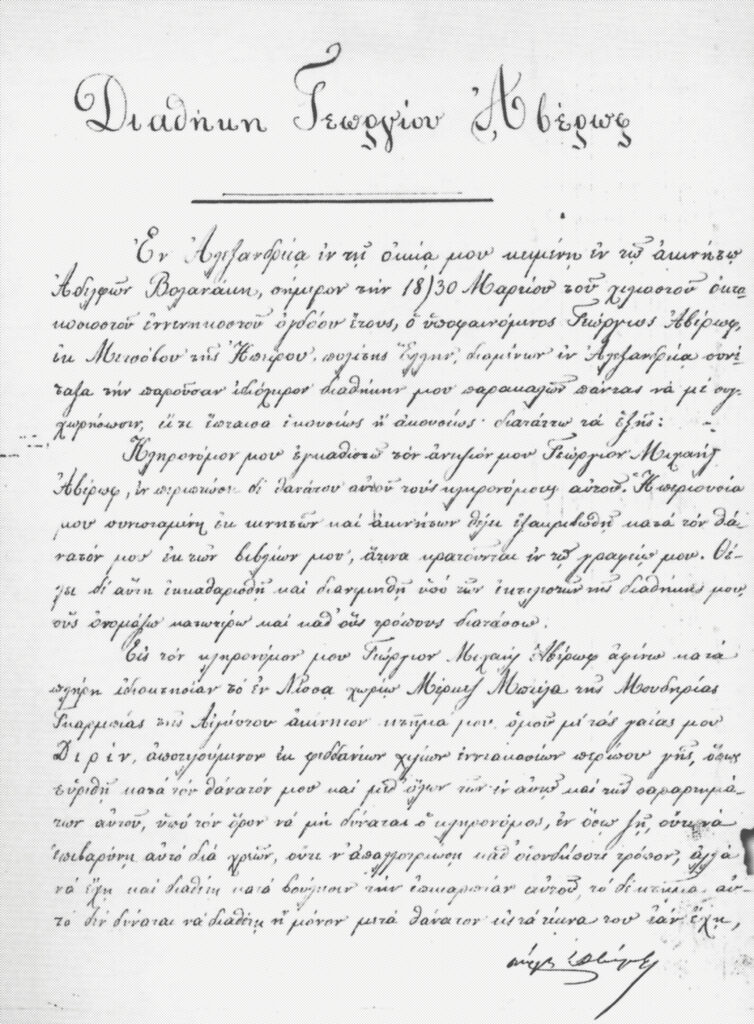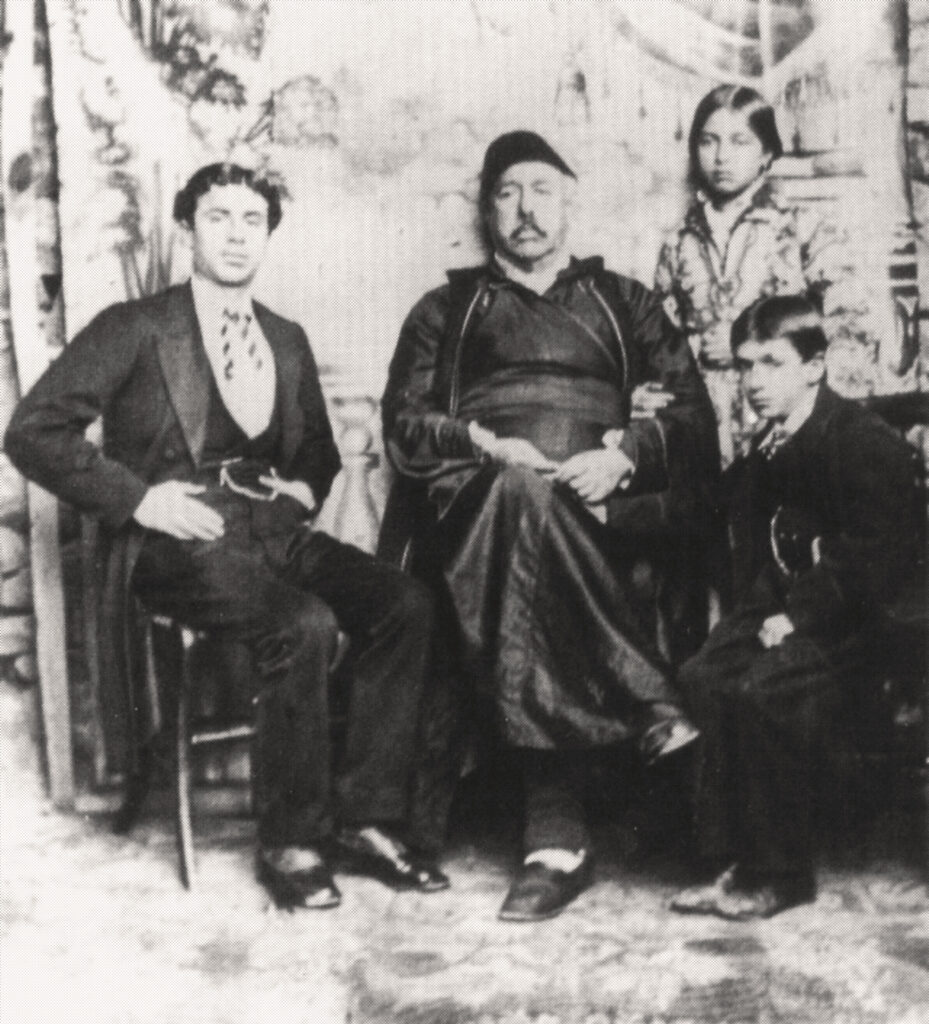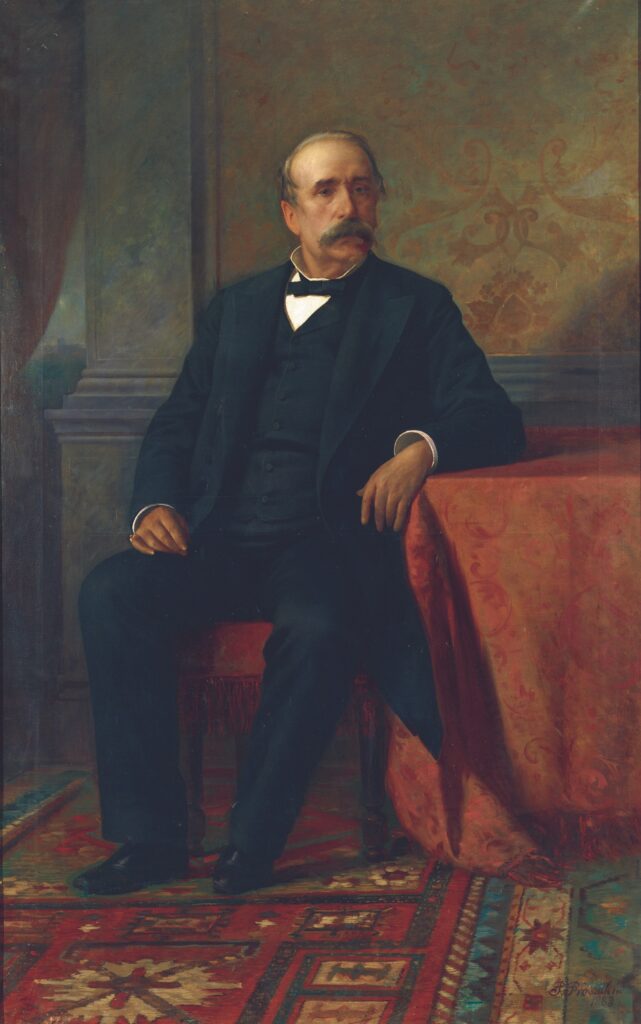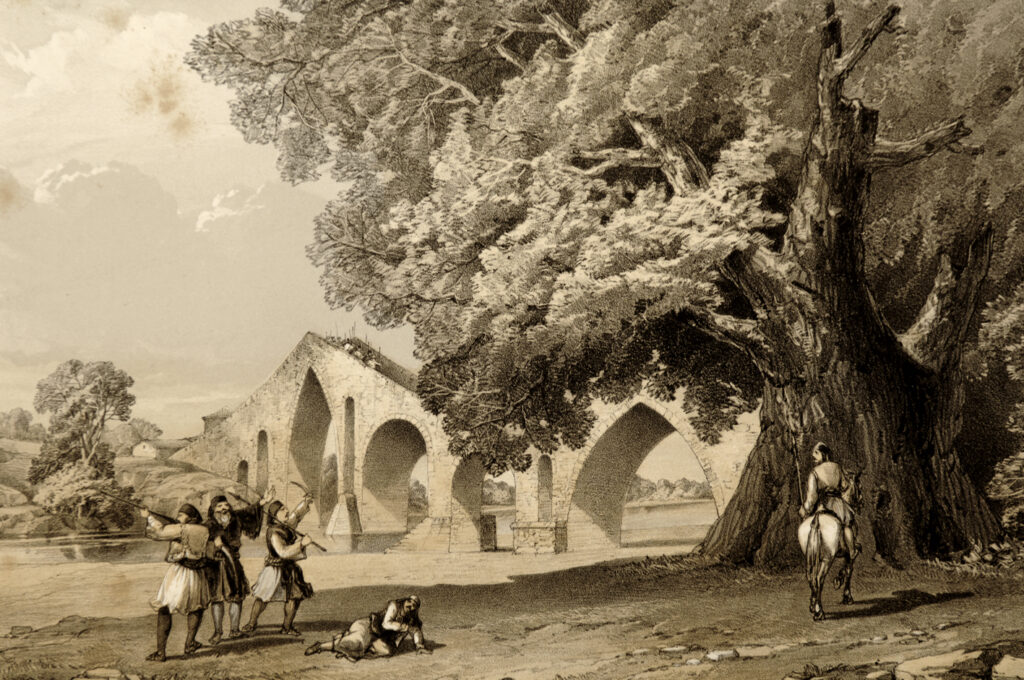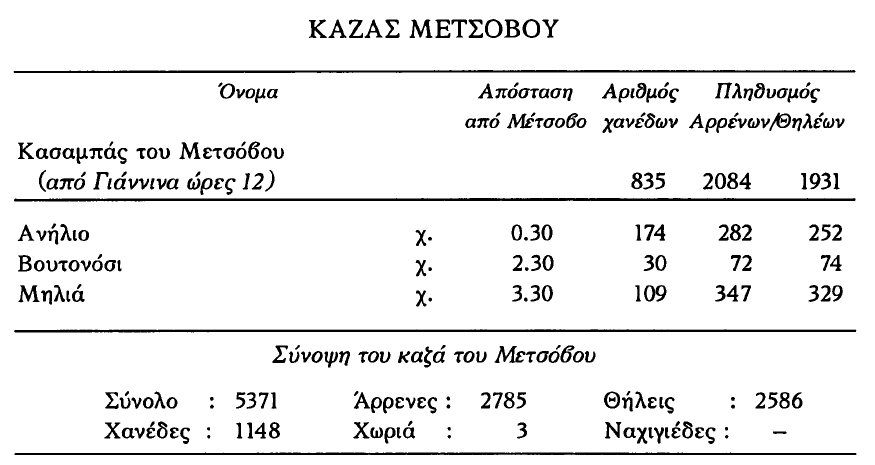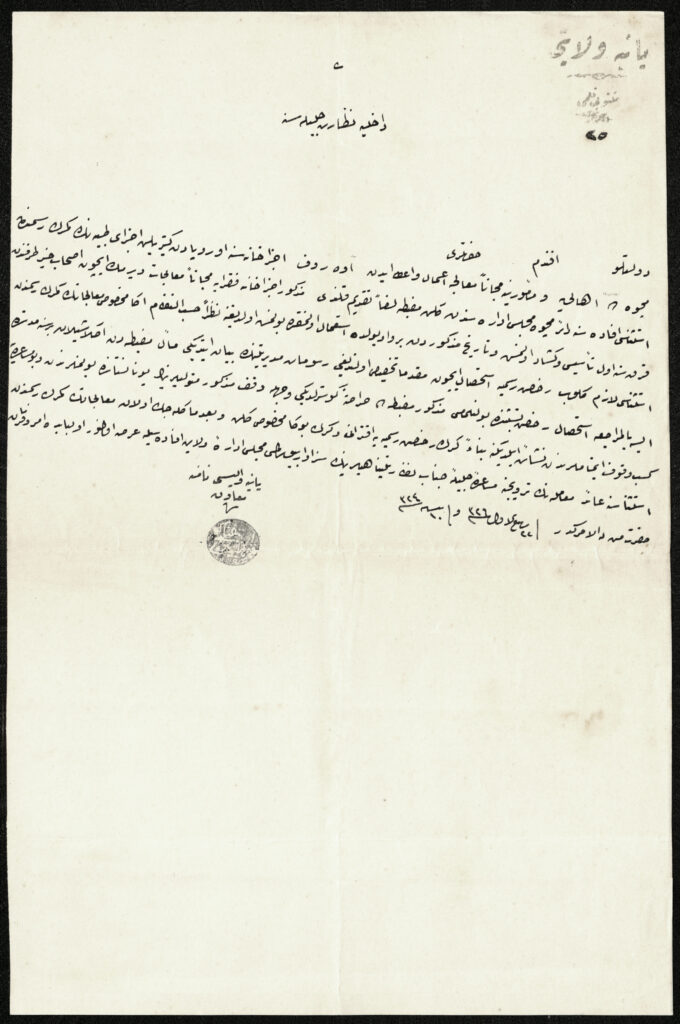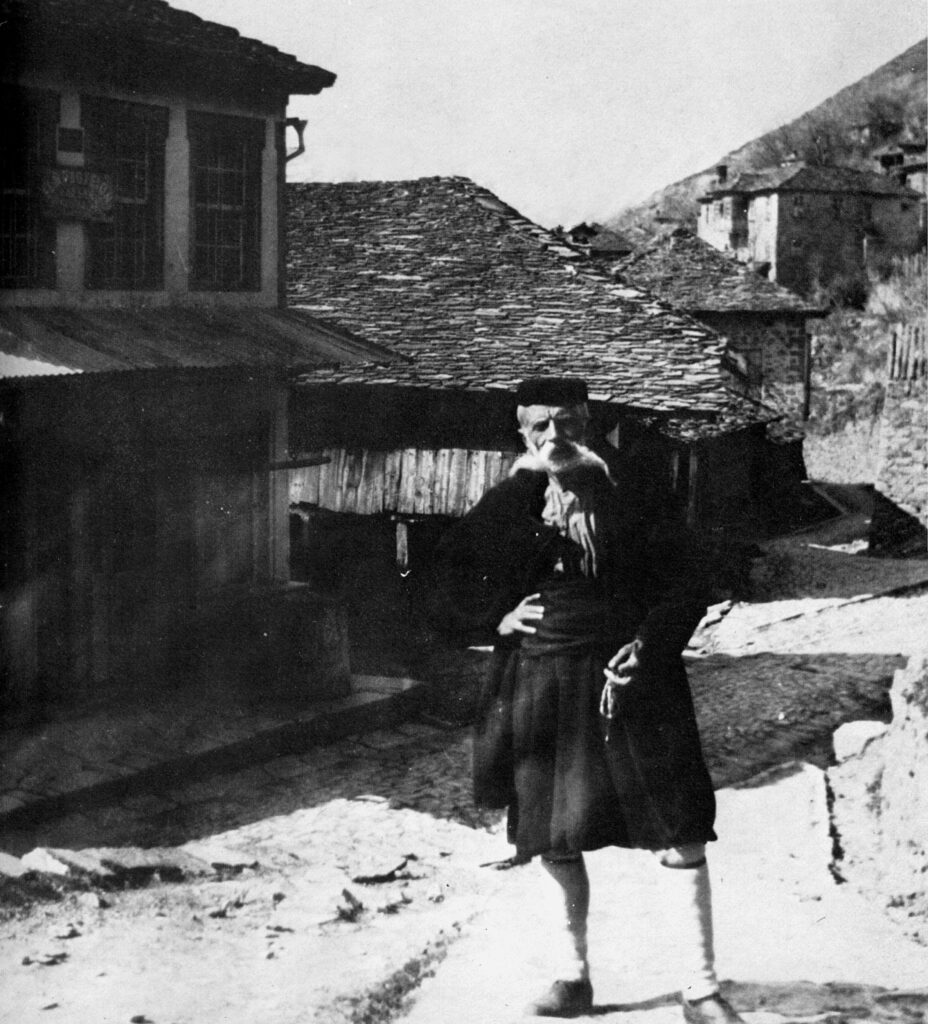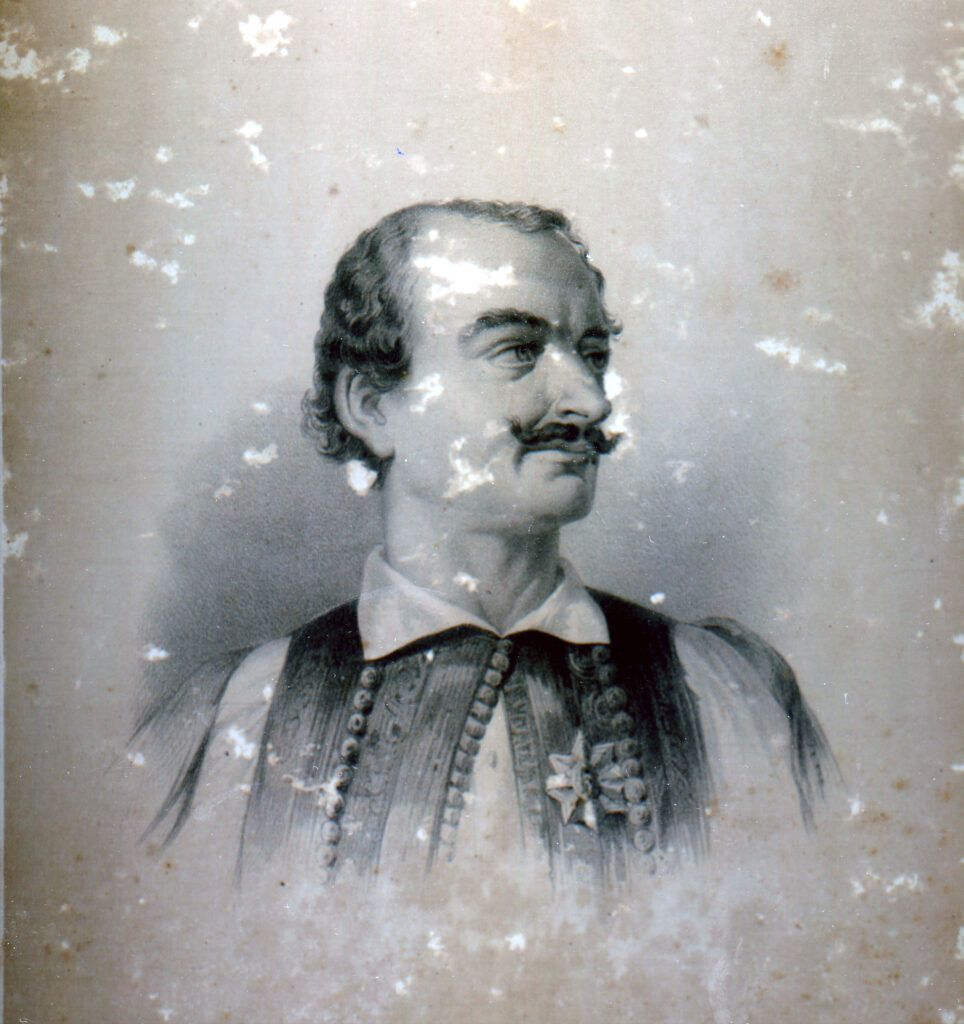On May 27, 1917, Italian troops from the European alliance occupied Metsovo, firstly as a means of forcing Constantine and Greece into WWI and secondly because Italy planned to expand into Epirus. A plan for the foundation of a Vlach «Republic of Pindos» was unsuccessfully instigated. The Italians retreated on September 2, 1917.
Categories metsovo_en
1915-7: National Schism between Venizelos and Constantine regarding Greece joining World War I.
GREEK STATE
1913-1939
The Balkan Wars changed the map of Europe. The Ottoman Empire lost almost all of its European territories while Greece doubled in size. From 1913 onwards, Metsovo belonged to the prefecture of Ioannina in the Greek state. The transition from the multi-national Ottoman empire to the Greek nation-state led to a series of political and economic transformations that inevitably affected the structure of the local society and the residents’ everyday life. From this point on, Metsovo would follow Greece’s fate and the people of Metsovo became part of the country’s political and social elite. The Asia Minor Catastrophe and the population exchange (1922-1923) marked the history of Greece but barely affected Metsovo, since it did not take in any refugees or lose any of its people. The interwar period was nevertheless a very troubled period, as Greece suffered political unrest, Europe saw the emergence of several fascist regimes and a world experienced an economic crisis. This period ended with the August 4 Dictatorship, imposed by I. Metaxas, which lasted until Greece entered World War II and Metaxas’ unexpected death.
In August 10, 1913, the Treaty of Bucharest was signed and the Balkan Wars end.
In October 31, 1912, the Greek army frees Metsovo, leading to the end of Ottoman rule in the area.
During the last ten days of October 1912, groups of Cretan volunteers, along with a detachment consisting of 340 soldiers of the regular army, moved through the area of Thessaly to the Greek-Turkish borders that, at the time, crossed the eastern hills of Metsovo.
On October 31, 1912, at 6am, the Greek troops, helped by guerilla groups from Epirus and volunteers from Metsovo, attacked the Turkish guards which was made up of 205 soldiers and 2 cannon. Fighting lasted until 4pm, when the Ottoman soldiers, besieged in the fortress of Metsovo, raised the white flag of surrender.
The First Balkan War breaks out in October 5, 1912.
The First Balkan War was fought between the Balkan League – comprised of Greece, Bulgaria, Serbia and Montenegro – and the Ottoman Empire. Within a few months the Ottoman Empire collapsed losing almost all of its European territories. However, Bulgaria’s wish for more land and especially its frustration at almost losing Macedonia, led to the Second Balkan War. On this occasion, Greece, Serbia, Montenegro, the Ottoman Empire and Romania joined forces against Bulgaria. The new war lasted just one month. It ended with the intervention of the European forces and led to the signing of the Treaty of Bucharest (July 1913). The Balkan Wars redrafted the map of the Balkan Peninsula. It was then that the independent Albanian state was founded. Serbia annexed Kosovo, Novi Pazar and part of Macedonia. Part of Macedonia was also annexed by Bulgaria (Bugaria calls it «Pirin Macedonia»), while Romania acquired south Dovroutsa. Greece received Epirus, a large part of Macedonia, the east Aegean islands and Crete.
In 1910, an epidemic decimates the population of Metsovo.
In his letter dated early June 1910, K. Foufas who lived in Trikala wrote to D. Tsanakas in Metsovo: «I hesitate to send my family, since typhus has not been eradicated. You are saying that no fragile and well-fed citizen was affected, so what would I want [for them], to be affected by typhus and suffer without knowing if they are going to die? I may send them to the mountains to improve their health and become absolutely healthy, but I do not think it is a good idea to send them to an infected place full of sickness. I will keep the family here or maybe I will send them to Vedista or Kastania».
The Young Turk movement started in Thessaloniki under the initiative of the Committee known as «Union and Progress». Their main slogan was «Freedom, Equality and Justice». They focused mainly on the abolition of the totalitarian regime of Sultan Abdülhamid II, the restoration of the 1876 constitution and the modernisation of the state to match European standards. Moreover, the Young Turks wished to maintain the integrity of the Ottoman Empire, while advocating for equality in general and equality before the law for all citizens, regardless of their language and religious faith. The Young Turk movement was enthusiastically welcomed by the ethnic groups of the Ottoman empire. However, the Young Turks soon started implementing a Turkish nationalism programme with a view to creating a Turkish state with a uniform ethnic identity.
After Georgios Averoff died in 1899, a large part of his fortune was given over to fund the operation of schools, the construction of an aqueduct, springs and a bridge, the repair of public roads and churches, tree planting, the maintenance of a cemetery, the supply of free medicines to all Metsovo residents, poor girls were provided with dowries and the purchase of books was made for the creation of a public library.
The general supervision of the legacies and the schools was assigned to Georgios’ elder brother, Nikolaos Michael Averoff (Kolakis, son of Halis).
In January 2, 1890, the Averofeio School of Metsovo opened thanks to a donation from Georgios Averoff. The school was burnt down during the Civil War in October 1947 and the current Primary School was built in its place in 1955 (by the Tossizza Foundation).
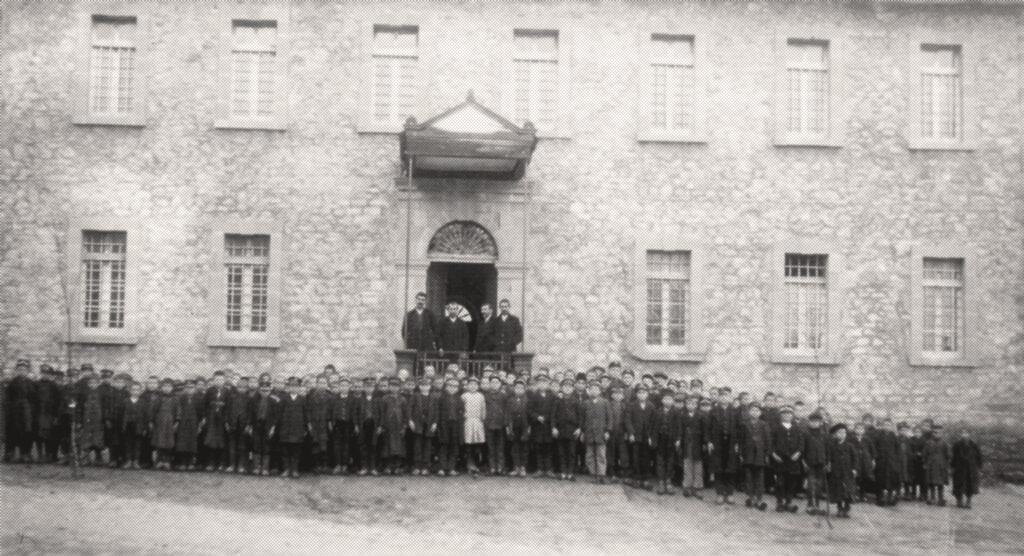
The two-storey Averofeio School of Metsovo with its pupils and teachers, in 1890. (Archive of G. Plataris-Tzimas)
Georgios Averoff was born in Metsovo in 1815. At the age of 19, he went to Egypt where he amassed a huge fortune from the trade of dates, fabrics, cotton, etc. Averoff was recognised as a great benefactor because his donations led to the construction of a number of projects in Athens, as well as a number in Metsovo and the Greek community of Egypt. It was with his money that the Panathenaic Stadium received a new marble facing, the Hellenic Army Academy was erected, the statues of Rigas Feraios and Patriarch Gregorios V were made and set at the central building (Propylaea) of the University of Athens and the famous Averoff battleship was manufactured. He died in Alexandria, Egypt, in 1899. His statue is located at the entrance of the Panathenaic Stadium.
In 1885, a Romanian school was founded (thanks to a legacy from Demetris Kazakovits from Metsovo), for the teaching of the Romanian language. Its operation was intermittent. It closed in 1901 by decision of the Romanian government but reopened in 1908 (at the house of Kyrgos Topis). The school was destroyed the day after the liberation of Metsovo (November 1, 1912) and its archive was set on fire.
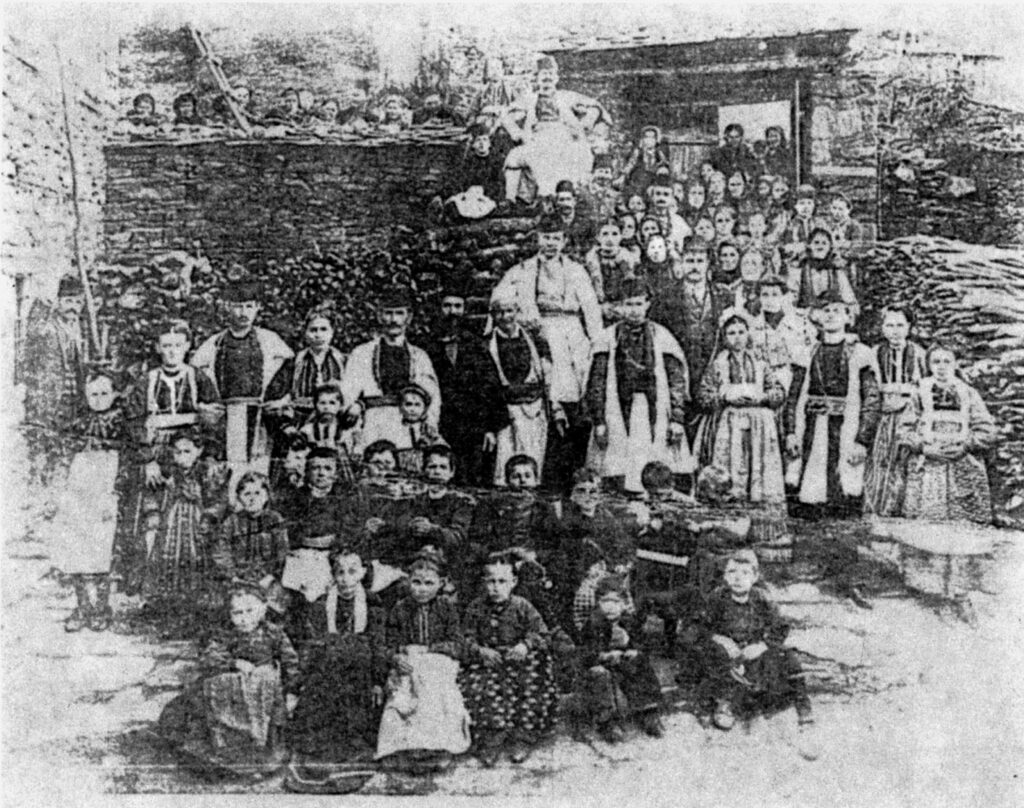
Snapshot of a Vlach wedding at the village of Drossopighi, early 20th century (Foundation of the Museum for the Macedonian Struggle)
The so-called ‘Koutsovlach question’ was an issue related to minorities that emerged in the second half of the 19th century when there was also a rise in nationalism in the Balkans, including Romania. Based mainly on the similarity of the Vlach language to Romanian, Romania claimed the Vlach populations of the Ottoman empire as its own. In the areas of Epirus, Macedonia and Thessaly an intense argument with Greece arose over the identity of the populations, expressed by the foundation of Romanian schools and churches. The antagonism increased at the start of the 20th century (during the Macedonian Struggle); Greek guerilla groups were active in Ottoman Macedonia and Greeks living in Romania were attacked, leading to the collapse of diplomatic relations between Greece and Romania. The Koutsovlach question became less important during the Balkan wars thanks to Venizelos’ approval of the free operation of Romanian schools and churches in areas that were annexed to the Greek state and had Vlach populations. However, the emergence of another factor, namely Italian imperialism, during World War I and into World War II, added a new twist to the problem. In 1917, Alkiviadis Diamantis, a Vlach speaking lawyer from Thessaly, instigated the foundation of a Vlach «Republic of Pindos» but it was not to last. In 1941-1942, Italy, as the occupying power, again with the help of Alkiviadis Diamantis, planned the foundation of an Autonomous Koutsovlach «Principality of Epirus» consisting of Pindos, west Macedonia and Thessaly. The plan was finally abandoned after Italy fell in the summer of 1943.
In 1878, under the pretext of the Russian-Turkish war, a revolt broke out in Epirus that led to a rise in guerilla warfare.
The 1877-1878 Russian-Turkish war represented one of the most serious crises of the Eastern War and ended with the defeat of the Ottoman Empire. The victor, Russia, demanded the creation of Greater Bulgaria as part of the Treaty of San Stefano. However, thanks to the intervention of Britain and Austria-Hungary, the treaty was modified at the Congress of Berlin. Romania, Serbia and Montenegro were recognised as independent states. During the war, the Greeks in Epirus, Thessaly, Macedonia and Crete revolted, though unsuccessfully. However, the negotiations at the Congress of Berlin resulted in Greece being granted Thessaly and the area of Arta in 1881.
In 1875, the area of Metsovo permanently became a kaza; a kaymakam (deputy governor) and a kadı (judge) were also established there. In total, it incorporated approximately 6,000 residents.
The 1864 administrative reforms of the Ottoman state led to a change in the names of the administrative divisions and the related offices.
The empire was divided into vilayets (prefectures or general administrative divisions), which were divided into sanjaks, which themselves were divided into kazas. The kazas, like the kaza of Metsovo, were governed by kaymakams, who were appointed and dismissed directly by Istanbul.
According to the 1895 census – the only published source containing a detailed recording of the population of Epirus during the Ottoman rule – the kaza of Metsovo belonged to the sanjak of Ioannina. In addition to the kasaba (Hora) of Metsovo, it included another three villages, Anilio, Voutonosi and Milia. In total, the kaza of Metsovo had 5371 residents and 1148 hanes (houses).
In the early 1870s, the «Averoff pharmacy» was founded in Metsovo. It provided the entire city and the residents of the wider area, including soldiers of the Turkish guard, with free medicine.
On April 23, 1908, in a letter to the Port (Home Office), a representative of the Vali (governor) of Ioannina requested that the pharmaceutical materials imported from Europe and destined for the «Averoff pharmacy» be exempted from customs charges. The letter says:
«We are sending the attached report of the Metsovo Administrative Council on the Averoff pharmacy, requesting that the pharmaceutical materials it imports from Europe be exempted from duties. The pharmacy manufactures and supplies free medicines to the poor and officials. (…) The Administrative Council of the Vilayet [of Ioannina] therefore requests that the High Home Office, on one hand, grants the pharmacy an official license and, on the other hand, approves the exemption from duties of the necessary pharmaceutical materials and any it will need in the future.» (Başbakanlı Osmanlı Arşivi / Ottoman State Archives, Istanbul).
The pharmacy is believed to have opened its doors in 1816, supplying free medicines to the poor of Metsovo.
In 1867, the area of Metsovo temporarily became a kaza.
The kaza was an administrative subdivision of a sanjak and can be understood to be province. Originally it indicated an area under the power of a kadı (Islamic judge). In 1864, however, the law on the vilayets dictated that the kaza was no longer subject to the hierarchy of Islamic judges. The administrative reform of the Ottoman state was completed in 1867 when the Ioannina and Trikala pashaliks become a single vilayet, the vilayet of Ioannina.
In 1864-67 the fort of Metsovo was built, incorporating a mosque.
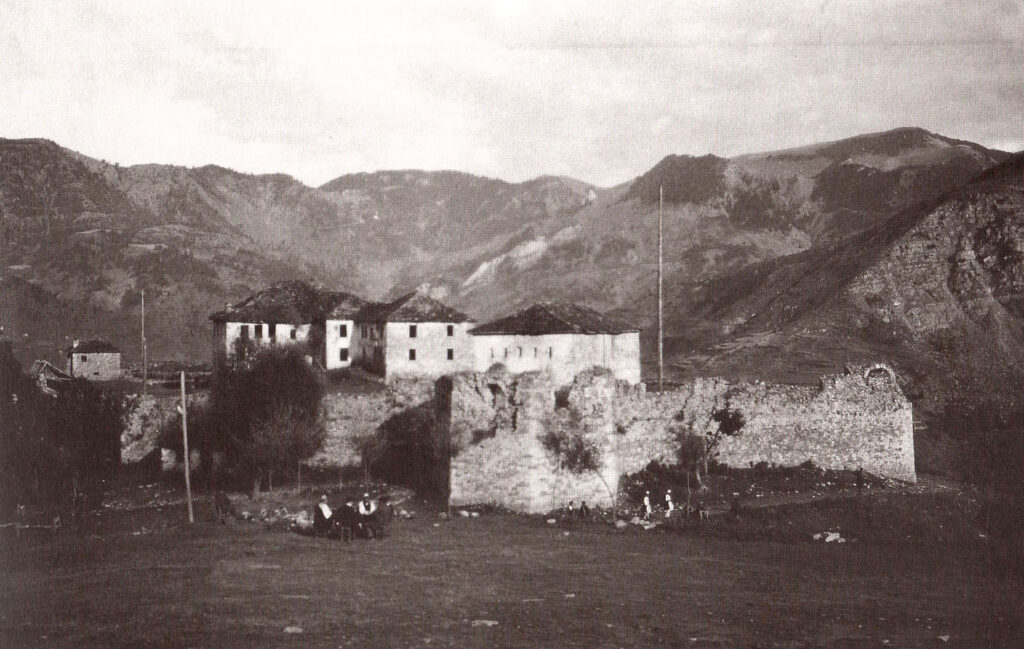
A picture of the fort taken by Hubert Pernot, a French linguist and Hellenist who visited Epirus in 1913, one year after the liberation of Metsovo. (Hubert Pernot, Neohellenic Institute, Sorbonne)
In 1912, after Metsovo was liberated, the fort gradually collapsed and was covered in earth, thus creating the hill that is still known as the «Castle».
Michael Tossizza, one of Greece’s national benefactors, died in Athens.
Michael Tossizza was born in Metsovo in 1787. In 1806, along with with his brothers, he took charge of his father’s fur processing firm in Thessaloniki. In 1820 he relocated to Egypt where he made a substantial fortune, thanks, among other factors, to the fact that he befriended the regent of Egypt, Mehmed Ali. Michael Tossizza was Greece’s first General Consul in Alexandria and he also contributed to the foundation of the Greek Community. In 1854 he moved permanently to Athens, where he died in 1856. In his will, he left significant amounts of money to help the poor and support health care and ecclesiastical and educational institutions, such as the University of Athens, the Arsakeio School and the Technical School.
In 1854, during the Crimean War, revolutionary movements emerged in Epirus under the leadership of General Theodoros Grivas. The residents of Metsovo were divided by the revolution, with some supporting it and others not. The latter group asked the Turkish armies from Ioannina to intervene and in March 1854, after three days of fighting, the Turks pushed Grivas from the city. Metsovo was looted and 400 houses were set ablaze. This ransacking is now referred to as «the Destruction of Grivas».
Theodoros or Theodorakis Grivas (1797-1862) was a Greek Revolution fighter coming from Preveza. He participated actively in the political life of the independent Greek state but without coming out in support of any specific party or principles. In 1836 he supported Otto, the then king of Greece, and put down the revolt against him in Acarnania, however in 1862 he launched a revolution against Otto and succeeded in occupying Vonista and Messolonghi. When the Crimean war broke out* he crossed the Greek-Turkish borders with a group of irregular troops to lead a revolt in Epirus. The confrontation between Grivas and Otto is reflected in the popular song «My dear Grivas, the king wants you».
*The Crimean war (1853-1856) was a conflict that took place between Russia, on one side and the UK and France on the other. The war is also known as the ‘Eastern War’. When Russia attacked the Ottoman empire, the UK and France rushed to support the Sultan. The war ended with Russia’s defeat, but Europe also suffered the consequences of the war, namely the destruction of the «Holy Alliance» and a shift in the international status quo that proved to be painful for Greece as well. During the war, revolutionary movements for the liberation of Epirus, Thessaly and Macedonia broke out but were unsuccessful. In order to punish Greece and force it to stay neutral, the Anglo-French navy occupied Piraeus and baricaded it for the three years between 1854 and 1857.
Nikolaos Stournaras, one of Greece’s national benefactors, died in Halkida.
Nikolaos Stournaras was born in Metsovo in 1806. He was the nephew of the benefactor Michael Tossizza (whose sister was Stournaras’ mother). Once he had completed his studies in his hometown, he went to Livorno in Italy, where he worked at the trade house of the Tossizza family. He was later sent to Paris to study at the School of Trade and Industry after which he moved to Alexandria where he worked as an assistant to his uncle, Michael Tossizza and then as the director of the trade house of the Tossizza family. He bought large plots of land in Fthiotida and at the same time, donated significant amounts of money to educational institutes and established charities in Alexandria and Athens in addition to helping to fund the construction of a school in Metsovo. In 1853 he went to Greece to work on a number of development projects but died suddenly. In his will, he left significant amounts of money to charitable causes, the schools in Metsovo and Alexandria and for the foundation of a technical school in Greece.


